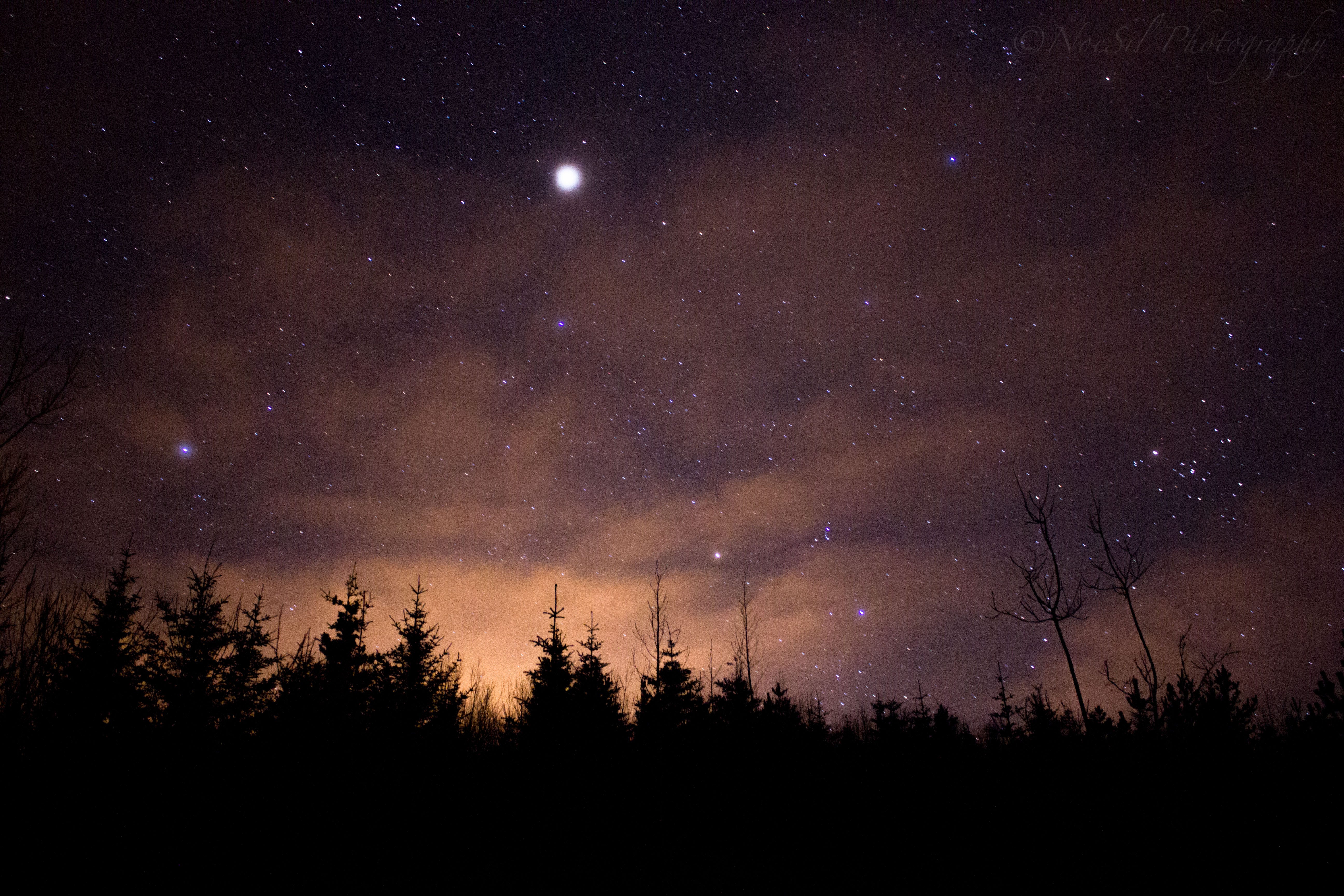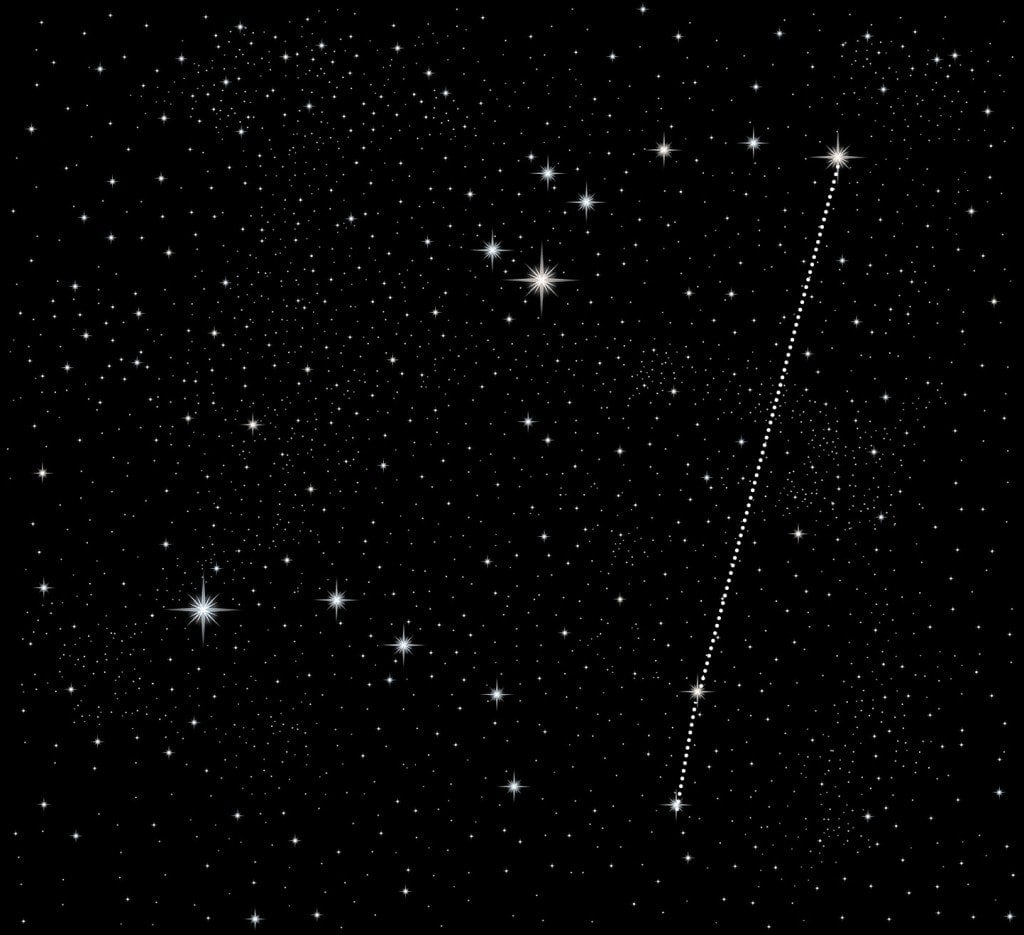What is the North Star or Pole star

whenever you are in the night and looking at the sky, suddenly you see most brighten and biggest star among them then you think that maybe its pole star, which is the biggest star because most people arbitrarily figure that the most important star in the sky should also be the brightest, but in truth, the North Star, which goes by the name of Polaris which is come from greek language and dhruva or dhruv tara in Sanskrit and other Indian languages. this star of only medium brightness. In terms of overall rank there are quite a few stars brighter than Polaris. In fact, Polaris doesn't even crack the top 40; it's number 45 on the list of brightest stars.
What is the North Star or Polestar

The reason Polaris is so important is because the axis of Earth is pointed almost directly at it. During the course of the night, Polaris does not rise or set, but remains in very nearly the same spot above the northern horizon year-round while the other stars circle around it.
So at any hour of the night, at any time of the year in the Northern Hemisphere, you can readily find Polaris and it is always found in a due northerly direction. If you were at the North Pole, the North Star would be directly overhead.
How to find the Pole Star and its location and distance
Polaris is located in the constellation of Ursa Minor, the Little Bear. It sometimes also goes by the name "Stella Polaris." The seven stars from which we derive a bear are also known as the Little Dipper. Polaris, the North Star, lies at the end of the handle of the Little Dipper, whose stars are rather faint. Its four faintest stars can be blotted out with very little moonlight or street lighting.
The best way to find your way to Polaris is to use the so-called "Pointer" stars in the bowl of the Big Dipper, Dubhe and Merak. Just draw a line between these two stars and extend it out about 5 times, and you eventually will arrive in the vicinity of Polaris.
Polaris is located at a distance of 434 light-years from Earth and has luminosity nearly 4,000 times that of our sun. Polaris shines at 2nd magnitude. On this astronomers' scale, smaller numbers represent brighter objects, with the brightest stars and planets in the night sky at around magnitude zero or even negative magnitudes.
The North Star it is a "pulsing" star, a Cepheid variable, which appears to vary in brightness ever so slightly – only one tenth of a magnitude – over a time frame of just under four days.
If you have a small telescope and train it on Polaris, you just might notice a tiny companion star (called Polaris B) shining at 9th magnitude with a pale bluish tint. This companion was first sighted by Sir William Herschel in 1780 (just a year later, Herschel would discover the planet Uranus). Astronomers believe that the two stars – A and B – are separated by about 2,400 astronomical units – one astronomical unit (a.u.) being the average distance of the sun to the Earth. The orbital period of the two stars may number in the many thousands of years.
How Pole star effect the Earth
The Earth spins on its "axis".
This axis is
an imaginary line running through the Earth. If you were to be high above the
Earth, looking straight down along the axis, all the points on Earth would
appear to move in circles around the axis. If you followed this axis out into
space from the northern hemisphere on Earth, it would point toward a particular
star in the sky. We call that star the "North Star" since it sits in
the direction that the spin axis from the northern hemisphere of Earth points.
At present, the star known as Polaris is the North
Star. However, Polaris has not always been the North Star and will not always
be the North Star. To understand that, we need to look at how the Earth spins
on its axis.
The spin axis of the Earth undergoes a motion
called precession. If you have ever watched a spinning top, you know that its
spin axis tends to stay pointed in the same direction. However, if you give it
a slight nudge, the axis will start to change its direction, and its motion
traces out a cone. This changing of direction of the spin axis is called
precession. So what gave the Earth the "nudge" it needed to start
precessing? The Earth bulges out
at its equator, and the gravitational attraction
of the Moon and Sun on the bulge provided the "nudge" which made the
Earth precess. It was the ancient Greek astronomer and
mathematician Hipparchus who first estimated the precession of the Earth's axis
around 130 B.C. The period of precession is about 26,000 years. In other words,
it takes 26,000 years for the axis to trace out the cone one complete time.
Comments
Post a Comment